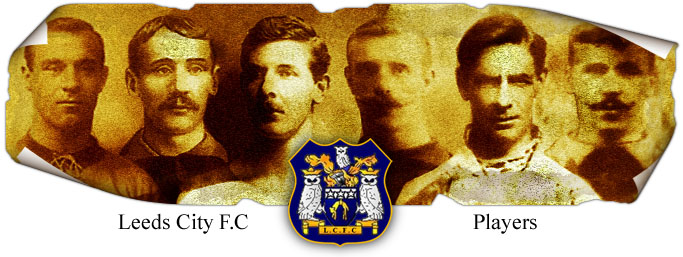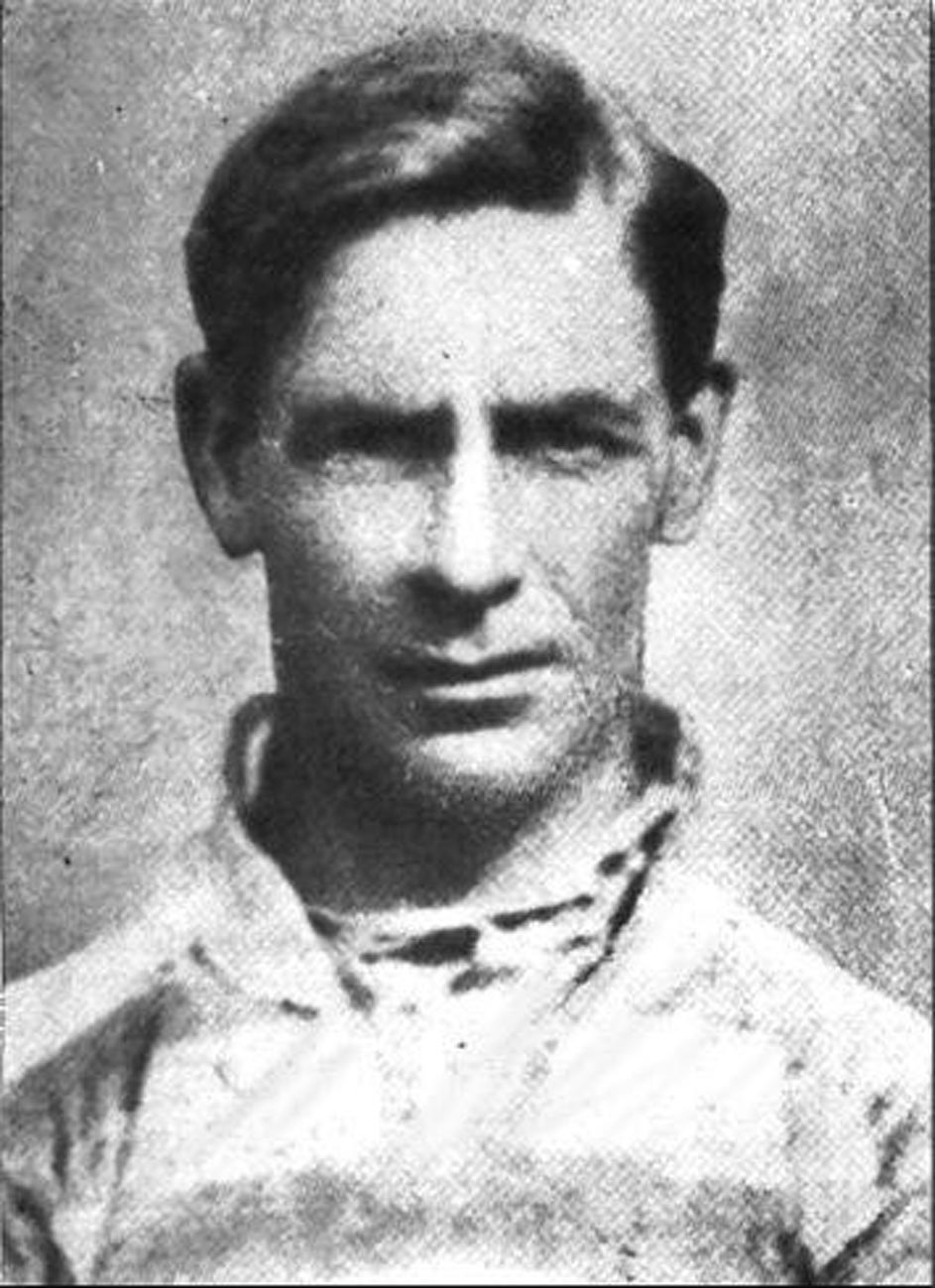

Blackman: Frederick Ernest (Fred)
1914-1919 (Leeds City Player Details)
Right Back
Born: Kennington: 08-02-1884
Debut: v Hull City (a): 21-02-1914
5’10” 12st 7lb (1914)
A carpenter by trade he soon became a Full Back of outstanding qualities, joining Woolwich Arsenal in 1907 when already in his early
twenties. He did no make the first team at Highbury and left for Non-League Hastings and St Leonards in May 1907. He was appointed
captain in his second season with club before joining the Southern League Brighton and Hove Albion two years later, in May 1909. He was an
integral part of the club's winning the Southern League in his first season at the club, when he was an ever-present. His consistently fine displays,
prompting the Athletic News to label him as "wonderfully quick on his feet, sure kicker with either foot, fearless tackler". In September 1910, he
was a member of the Albion team that beat Aston Villa 1-0 at Stamford Bridge to win the Charity Shield with a goal from Charlie Webb. His
reputation grew further as the South Coast team prospered and his reputation grew as he represented the Southern League twice and featuring
as an ever-present in his club’s Southern League championship-winning side of 1910. He also made a lasting impression on Northern sides in
other games as he played in Brighton’s 3-1 FA Cup win over Leeds City in January 1911. His form was so impressive that he was given a trial for
the full England team at Tottenham in the same month. He was obviously destined for better things and after seventy-six appearances in the
Southern League for Brighton and Hove Albion, Huddersfield Town paid £300 for his services in May 1911. He made thirty-two appearances for
the Terriers in his first season, when a formed a fine full-back partnership with Fred Bullock as Town fought hard to avoid relegation. He added
another thirty-six in 1912-1913, when he also became captain. Unfortunately, Town slumped back into the bottom half of the table in 1913-14 but
Blackman remained a stalwart of the side before departing Leeds Road in a big money move in February 1914. Leeds City had long been seeking
to strengthen their defence, approaching various clubs in search of reinforcements and, according to the Yorkshire Post, "in one case at least
something like a record transfer fee was offered for a very well-known player, but without result". City's hunt for a strong defender was ended when
Huddersfield agreed a deal. According to the Leeds Mercury, the transfer "caused quite a sensation in Huddersfield soccer circles yesterday, and
the action of the Huddersfield Town directorate in parting with their most reliable defensive player was somewhat adversely criticised". Leeds City
paid £1,000 to secure his signature in February 1914, after he had taken his appearance tally with Town to ninety-two in League games. Blackman
made his debut for City a week later, on 21st February 1914, in a 1-0 defeat at Hull City, reportedly giving "an excellent account of himself". The
Mercury, commented "There is not the least doubt that Blackman is a fine player. He looks slim but he is a great deal more strong than he looks. He
showed us on Saturday that he never gets flurried no matter how tight the corner he gets into. There is no force about him, and no hurry. He is one of
the coolest backs in the country at the present time, and high honours undoubtedly await him. It may have been Blackman's influence, and it is a fact
that Affleck played a fine game on Saturday, and there is not the least doubt that Leeds City are now strong in defence." Blackman played in all
fourteen games to the end of his first part-season. City still finished fourth, only a couple of points shy of promotion. Blackman was a regular choice
again in 1914-15, though he sustained a thigh injury at Bury on 21st November 1914 when he fell on the hard surface when making a clearance. He
had to see out the game on the right wing, and missed the following match at home to Preston North End as a consequence. Injury also kept him out
of the FA Cup clash with Arsenal and most of the final two months of the campaign. He made thirty appearances for the season which took his total
League appearances for City on to forty-four with a further two in the Cup, before the War curtailed his Leeds career. During the War he was based
in the South of England and during the war years guested for Fulham. When the Football League restarted Blackman returned to London at the end
of the season, though City retained his registration. In July 1919, City released Blackman and he joined Southern League Queens Park Rangers. He
was into his mid-thirties and having lost four years of his footballing life to WW1. A year later, the West London outfit were elected to the newly formed
Division Three. Blackman made forty-two appearances in his three years at Rangers, where he finished his playing career.
| Appearances | Goals |
| League 44 | 0 |
| F.A. Cup 2 | 0 |